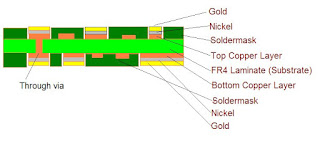(1) To understand why the current shock test is considered by Westpak to be meaningless.
(2) To figure out a meaningful way to shock test the meter to destruction.
Summary of Conversation:
(1) Went over Damage Boundary Curve test methodology covered by ASTM D3332 Methods A and B.
(2) Went over applicability of said test for current products
(3) What is entailed in our current test, and why it may or may not make sense.
(4) Got an idea for how number of G’s relate to real life.
Conversation in Detail:
(1) Damage Boundary Curve Methodology.
a. Comparison of Method A vs. B (see table below)
(1) Went over Damage Boundary Curve test methodology covered by ASTM D3332 Methods A and B.
(2) Went over applicability of said test for current products
(3) What is entailed in our current test, and why it may or may not make sense.
(4) Got an idea for how number of G’s relate to real life.
Conversation in Detail:
(1) Damage Boundary Curve Methodology.
a. Comparison of Method A vs. B (see table below)
b. Curve generation
i. X-axis is formed by Method B
ii. Y-axis formed by method A
c. Purpose of Damage Boundary Curve Method: knowing what the characteristics of the bare product is, design the packaging to bring the area within the “Damage” region within the “Damage Free” region. See picture below:

d. Duration of test: 2-3 days
i. X-axis is formed by Method B
ii. Y-axis formed by method A
c. Purpose of Damage Boundary Curve Method: knowing what the characteristics of the bare product is, design the packaging to bring the area within the “Damage” region within the “Damage Free” region. See picture below:

d. Duration of test: 2-3 days
(2) Applicability of above test on current product
a. Most likely cannot perform Method A test. We know the bare product can withstand drop test, which is equivalent to around 300 G. The machine can only do a maximum of 120 G for Method A.
b. Best proposal is to increase height on shock machine on Method B to up the max G’s to see what G’s the device fails.
a. Most likely cannot perform Method A test. We know the bare product can withstand drop test, which is equivalent to around 300 G. The machine can only do a maximum of 120 G for Method A.
b. Best proposal is to increase height on shock machine on Method B to up the max G’s to see what G’s the device fails.
(3) What is entailed in our current shock test, and why it may or may not make sense.
a. We do 300 pulses in each of the 6 directions
b. Each pulse is a half sin pulse performed at max peak of 30G, and 100G, at 6 ms.
c. Each pulse at 30G is equivalent to smacking the table with your hand.
d. This may or may not make sense as a lifecycle test.
a. We do 300 pulses in each of the 6 directions
b. Each pulse is a half sin pulse performed at max peak of 30G, and 100G, at 6 ms.
c. Each pulse at 30G is equivalent to smacking the table with your hand.
d. This may or may not make sense as a lifecycle test.
(4) Idea of G in real life. A hand held device dropped from 1 m will experience 300-400 G.

